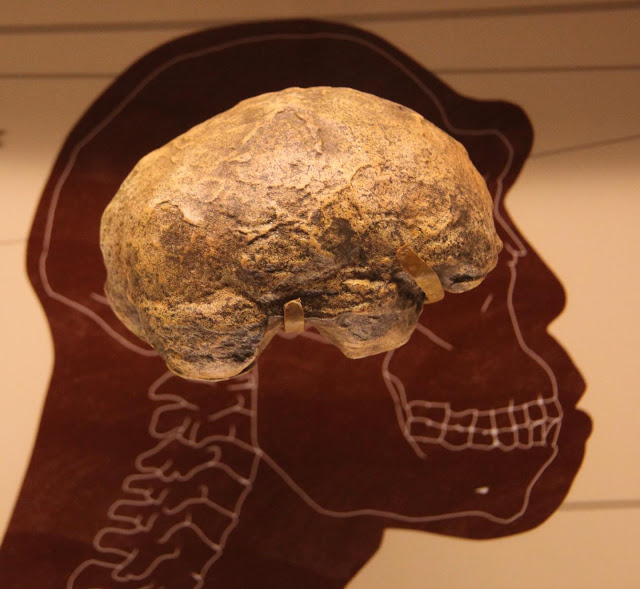

| Online: | |
| Visits: | |
| Stories: |

| Story Views | |
| Now: | |
| Last Hour: | |
| Last 24 Hours: | |
| Total: | |
Why Do We Have Big Brains? New Findings Run Counter To Prevailing Thought
Why do humans have big brains?
Animals with high cognitive ability also have relatively large brains, but the factors that drive evolution of big brains remain unclear. Scientists have hypothesized that ecological, social, and cultural factors could each play a role. Most of these hypotheses have not been formalized mathematically, but doing so would allow scientists to refine their tests.
Homo erectus endocast in the Smithsonian Museum of Natural History in Washington, D.C. Under the specifications used, the authors’ mathematical model recovered brain sizes matching those of H. erectus.

Credit: Tim Evanson, CC-BY-SA
To address the issue, Mauricio González-Forero of University of Lausanne, Switzerland, and colleagues developed a mathematical model that predicts how large the human brain should be at different stages of an individual’s life, depending on different possible evolutionary scenarios.
The researchers used the model to test a simple scenario in which social interactions and cultural factors are excluded, revealing the influence of ecological factors alone. In the scenario, a human must hunt or gather food alone, but may receive some help from its mother while it is still young.
Under those specifications, the hypothetical human brain grew as big as ancient humans’ brains are thought to have grown, and the slow growth rate matched that of modern human brains. This runs counter to prevailing thought, which holds that social and cultural influences are required to achieve these sizes and growth rates.
“Our findings raise new questions about the effects and interactions of ecological, social, and cultural factors, and our framework offers a new tool to address them,” González-Forero says. “More broadly, our framework allows for new experiments in silico to study brain evolution, life history, and brain senescence.”
His team is now using the new model to investigate how social factors may influence evolution of large brain size. In the future, they hope to test cultural factors as well.
Contacts and sources:
Mauricio González-Forero
Citation: González-Forero M, Faulwasser T, Lehmann L (2017) A model for brain life history evolution. PLoS Comput Biol 13(2): e1005380. doi:10.1371/journal.pcbi.1005380 The freely available article is PLOS Computational Biology at: http://journals.plos.org/ploscompbiol/article?id=10.1371/journal.pcbi.1005380
Source: http://www.ineffableisland.com/2017/03/why-do-we-have-big-brains-new-findings.html


